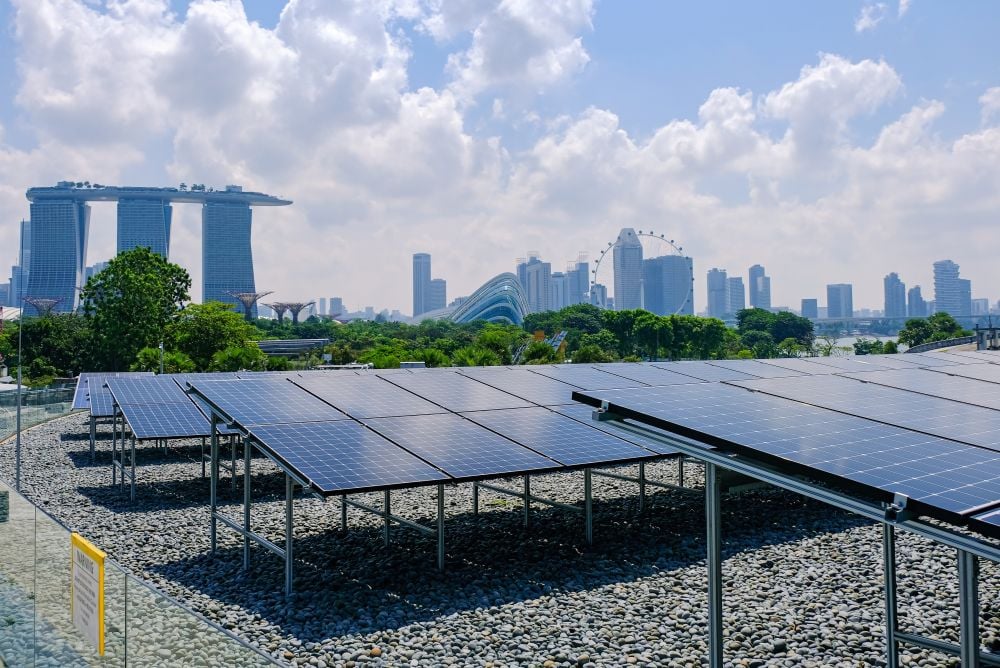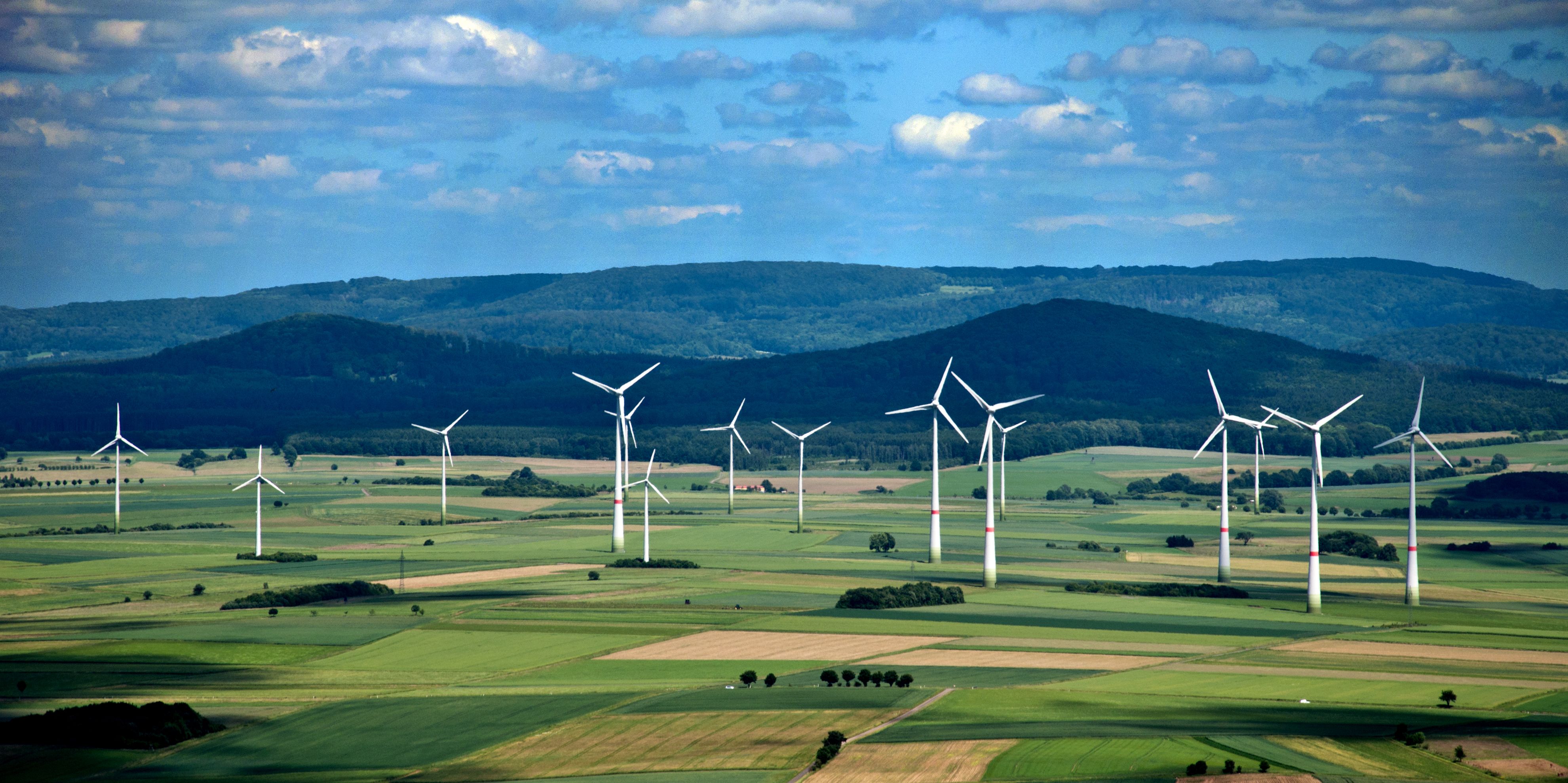While the global crisis of the past 18 months was defined by Western banks stepping away from the brink, it was also a time when Asian banks stepped into the breach. No where is this more apparent than in the region’s project financing market.
As the economic recovery consolidates across the region, various infrastructure projects, particularly in power, are attracting a lot of interest, including in such countries as India, Indonesia, Thai-land and Vietnam.
Indeed, project finance in Asia has held up well amid the global crisis, compared with the rest of the world. Although the volume of project finance lending in every region apart from sub-Saharan Africa declined in 2009, the Asia-Pacific region reported the smallest drop at 20.3% to US$56.42 billion, thanks to the robust activity in South Asia which actually bucked the downtrend and posted a 53.2% jump to US$30.23 billion in 2009.
 |
|
| Chen: China and India are able to take care of themselves |
|
For one thing, domestic banks, unlike many of their foreign counterparts, remain open for business. “Banks in Asia were not as leveraged as the rest of the world,” notes Grace Chen, head of natural resources, infrastructure and power in Asia at Credit Agricole Corporate and Investment Bank. “They were quite insulated from the subprime crisis and as a result, the supply of liquidity in the region did not really suffer.”
Demonstrating the depth of the liquidity of the Asian banks, State Bank of India (SBI), according to Thomson Reuters, topped the global league table for project finance loans with total proceeds – as a bookrunner – of US$19.94 billion in 2009. Calyon was way behind in second place with just under US$4 billion.
To be sure, international banks have scaled back their business and have become highly selective in financing project finance transactions, while several sponsors have held back in terms of launching their projects.
“The universe of banks involved in project finance has been reduced over the last few years with many US and Swiss banks no longer participating in this space,” notes William McCormack, a partner at the law firm Shearman & Sterling. “At the same time, many banks have been too busy shoring up their capital structure, sorting out liquidity issues and trying to deal with the financial crisis rather than committing their balance sheet and taking on new assets.”
| |
 |
| |
McCormack: Chinese banks have huge appetite to lend |
But the requirement for infrastructure financing has never abated. A Fitch Rating report released on January 29 says the level of capital expenditures required in India’s power sector is likely to ensure continued investor interest in the sector. It says both equity and debt investor interest is likely to stay strong during 2010 despite the very large investments seen in 2009.
Also in India, the telecom sector is growing rapidly, which should offer lending opportunities for banks and other financing institutions. “This has been a huge growth area with the number of subscribers rising at a rate of 10 million a month recently,” notes S K Agarwal, vice-president for project advisory and structured finance group at SBI Capital Markets. “We are seeing new players entering the market, which requires financing.” He adds that the transport sector, particularly road projects, will be a major attraction in the next two to three years as this has been given a special thrust by the Indian government.
 |
|
| McCoole: Sponsors are seeking flexibility and faster delivery |
|
As Conor McCoole, managing director and head of project finance for Asia at Standard Chartered Bank, points out, the Asian project finance market has been disciplined in terms of leverage, loan tenors and covenants. “It is an attractive business characterized by sound risk allocation, transparent repayment sources and the discipline of covenants and security,” he points out.
McCoole notes that sponsors are seeking flexibility and faster delivery to overcome the crisis and that this can be achieved through a combination of construction period bridge financing followed by term refinancing. “They want faster solutions than the traditional project financing, which can take 12 months to 18 months,” he says.
In the first half of 2009, during some of the most dismal times of the financial crisis, Standard Chartered completed a fast-track construction bridge loan for a petrochemical project in Thailand and a five-year deal for an offshore FPSO (floating production, storage and offloading) vessel owned by a Malaysian client. It also extended a bridge loan on a sole basis to a Chinese company to complete a waste-to-energy project.
Agarwal says 95% of the project finance loans that SBI Capital Markets raised during the year were for projects located in India and only 5% for transactions outside of India. He says his bank raised close to US$9 billion in 2009 to fund power projects alone involving 10,500 megawatts (MWs), up from US$6.5 billion in the previous year, which financed projects involving 8,500 MW. “There is a huge demand for power in India and Indian corporates have become active in this sector in the past four to five years to address the critical supply situation,” Agarwal says. “And they are raking in sizeable profits as India is extremely power deficient.”
SBI’s dominance globally reflects the expanding role of the domestic banks in Asia as the largest project finance players in their respective home markets. As Agarwal points out, India is very much a domestic market, with little participation from foreign banks, which takes place mainly through the export credit agency (ECA) route. Foreign banks, he says, are estimated to account for only 5% to 7% of the total project financing loans extended in India.
| |
 |
| |
Agarwal: Road projects will be a major project finance attraction in India |
“Foreign banks are still not comfortable with long tenor financing, and Indian infrastructure projects are being funded with terms of between 12 years and 14 years,” Agarwal notes. “In contrast, the local banks are fine with the long tenors since they know the sponsors – who are mostly their clients – and are therefore comfortable with handling their risks.”
Chen concurs: “China and India are two of the largest project finance markets in Asia with their huge demand for infrastructure. However, both of these markets are dominated by domestic banks. It is difficult to compete with them in terms of pricing. We are very much interested in being involved in these markets because they are the future of project finance, yet they are able to take care of themselves.”
Pricing issue in China
Stephanie Clement-de-Givry, managing director and head of natural resources and energy project finance and structured commodity finance for Asia-Pacific at Société Générale Corporate & Investment Banking, notes that China and India have their own practices and their own way of looking at regulatory risks, which she says are perfectly valid.
“In China, we sometimes do not participate in their projects, not only because of the pricing issue, but because we have our own practice to follow,” she says. “We’ve worked with the Chinese banks on a number of projects in their home market and outside China, and have done co-advisory work with them.”
The same can be said in other parts of the region where the domestic banks are taking on significant project finance transactions all by themselves. In what has been recognized as the largest peso-denominated project financing deal to date in the Philippines, Cebu Energy Development Corporation raised 16 billion pesos (US$347.83 million) to help finance the construction of a 3 x 82 MW coal-fired power plant in the island province of Cebu.
The project, the largest power plant built in the Philippines during the past decade, is a joint venture between Global Business Power Corporation, Aboitiz Power Corporation, Vivant Corporation and Formosa Heavy Industries. Lead arranged by First Metro Investment Corporation, the four-tranche financing was provided by nine local banks and two insurance companies with a tenor of 12 years.
Domestic banks are not the only ones that have stepped up their role in funding project finance transactions. Development banks, multilateral agencies and ECAs too have joined the fray to fill the vacuum left by the international commercial banks.
For example, people are keeping an eye on the Nghi Son power plant in Vietnam being tendered by the Vietnamese Ministry of Industry and Trade, and Japan Bank for International Cooperation is said to be looking at its documentation.
 |
|
| Clement-de-Givry: Good common sense analysis is back |
|
“ECAs are now providing not just pure cover for project finance transactions, but direct lending as well,” notes Clement-de-Givry. “They were generally involved in emerging markets to provide cover on the back of the international banks’ lending. But as the financial crisis unfolded, they have helped bridge the liquidity gap. The sponsors have taken this trend one step further as we saw some non-Japanese sponsors eager to team up with Japanese companies to access this ECA-backed liquidity.”
McCormack notes that the International Finance Corporation (IFC), the private sector investment arm of the World Bank, is playing a greater role as well. “We are on the global legal panel for IFC from which it selects the legal counsel for its various investments around the world,” he reveals. “We also work a lot with the Asian Development Bank (ADB). We have seen a significant increase in the amount of work with this type of institution. A few years ago, IFC’s equity investments exceeded their loan investments. But as a result of the crisis, they seem to have significantly increased their loan investments just as the commercial banks have backed away from project finance deals. So development banks and multilaterals are stepping in to take the place of commercial banks and they are often joining hands with other similar institutions in an agency club type of financing.”
This trend is exemplified in the US$235 million, 83 MW New Bong Escape hydroelectric power project in Azad Jammu & Kashmir, which involved the participation of IFC, ADB, Islamic Development Bank (IDB), the French development finance institution Promotion et Participation pour la Coopération économique (Proparco) and the local banks in the multi-sourced financing of the project.
Just as the development banks, multilaterals and the ECAs are assuming a prominent role in the project finance market, the same can be said of the Chinese banks, which have raised their profile through several significant transactions in Asia and beyond.
“The Chinese banks are in constant evolution in terms of project finance,” notes Clement-de-Givry. “Originally, they were only following the Chinese sponsors. Now they are looking at any Chinese angle to a project as well. They are now willing to participate, for instance, if the offtaker is a Chinese company as long as they are satisfied with the risk profile of the project. So it is not inconceivable that in the future, the Chinese companies will be playing a growing EPC (engineering, procurement and construction) role, for example, in the Middle East.”
Huge appetite to lend
One of the projects that highlights the growing importance of the Chinese banks and other Chinese institutions in the global project finance arena is the US$1 billion Salalah 445 MW integrated water and power project in Oman. Sembcorp of Singapore bid for the project at the height of the market in 2007 and originally anticipated that they would look to the international commercial banks to finance it. Standard Chartered Bank initially underwrote the financing. However, Bank of China and China Development Bank (CDB) eventually stepped in and are now providing the largest share of funding compared with the local currency tranche and the international banks’ dollar tranche.
“Subject to the recent crackdown on bank lending, the Chinese banks have both huge amounts of cash to lend and the appetite to lend,” notes McCormack. “In the first two weeks of January alone, they lent as much as 1.1 trillion renminbi (US$161.76 billion) in new loans. They are likely to be a significant player in project finance in 2010.”
The Chinese banks, and the CDB for that matter, are not just active in the power sector, but in the telecom sector as well. CDB is involved in the second tranche financing for Aircel of India amounting to US$350 million. The first tranche amounting to US$2.2 billion was closed in 2009 and was provided mostly by the Indian banks.
Another project that illustrates the Chinese banks’ stature in the region is the GNPower Mariveles Coal Plant in which CDB acted as the sole offshore lender, mandated lead arranger and lead underwriter in the US$493 million offshore term loan facility tranche of the project. China’s export credit insurance agency, China Export and Credit Insurance Corporation (Sinosure), is involved in the project as the export credit insurance provider. There is also an onshore term loan facility tranche for the project amounting to US$227 million.
The GNPower Mariveles is touted as the first power plant in the Philippines to be fully financed by the private sector without government support. The project consists of two identical 300 MW power blocks located on the Bataan peninsula on the island of Luzon. It will make available generating capacity and sell power to offtakers under long-term power purchase agreements (PPAs), as well as a portion into the Philippine wholesale electricity spot market. The coal will be sourced under long-term offtake agreements with Indonesian suppliers.
Indeed, the Philippines is one of the busiest project finance markets in Asia in 2009, at least in the power sector. Another notable deal is the US$450 million financing for the 2 x 100 MW Kepco SPC power project, also in Cebu, with the Korea Electric Power Corporation and Salcon Power Corporation as the sponsors. This is a landmark transaction as it is the first financing by international lenders to a greenfield merchant power project in the Philippines. Given the move towards merchant power in the Philippines, this transaction is likely to set a precedent for new greenfield power projects in the country for years to come.
“There has long been a push to move towards merchant power in the Philippines and away from the contracted PPA structures,” notes McCormack. “But it is challenging to get merchant power away in a developing market and in this financial climate. The main issue, of course, is the absence of a guaranteed cash flow pursuant to a contracted offtake arrangement from a creditworthy counterparty. Although you can hedge this risk, the cash flow will be affected if there is excess capacity in the system or insufficient demand for electricity.”
For project finance lenders, the financial crisis did provide some positive aspect into the market. “Although the market has slowed as a result of the crisis, this is a great time for the project finance product, which is characterized by good credit performance and much better pricing, as well as traditional strong covenants and full security packages,” says McCoole. “The financial crisis has prompted a return to more disciplined lending practices. Whereas many other products blew up during the crisis, project finance transactions have performed exceptionally well.”
Clement-de-Givry concurs: “We feel the market is again embracing good common sense analysis, which is very encouraging. This should entice the banks to support well-structured deals with good economic rationale and experienced sponsors. We ourselves are now very keen to extend financing to projects and we have a huge pipeline. Earlier, we only focussed on advisory work as we felt the project finance market was dangerously veering away from the standard norm.”
McCoole describes project finance as a solid business in Asia, and for this reason it should attract new banks. “Arguably, if Asian banks are looking for a sound business where they can prudently deploy capital, it seems to me that project finance should have long-term attraction,” he says. “Transparency is one of the strengths of project finance. Banks know exactly what they are funding and how risks are allocated and mitigated; due diligence is thorough and the source of repayment is obvious – all of this protects the transaction and underpins its performance.
McCoole notes that pricing of project finance deals rose sharply in the wake of the financial crisis and for now, it appears to be holding up. “But as the interbank funding market stabilizes, we could see some of the additional risk premium working its way out.”
Landmark power project in Kashmir
The New Bong Escape hydroelectric power project is the first project financing of any kind in Azad Jammu & Kashmir. The electricity will be sold into Pakistan under a 25-year power purchase agreement. As a result of the multiple sources of financing, it features complex inter-creditor arrangements and this complexity is reinforced by the novel ijara-lease structure provided by the IDB.
For William McCormack, a partner at the law firm Sherman & Sterling who worked on this project, its closing represents a considerable achievement given the number of political and other risks associated with the project, which had to be overcome. The project is set against the backdrop of the Indus Waters treaty between India and Pakistan, and a growing interest in Pakistan for the relatively cleaner and cheaper hydroelectric power.
Work on the project first started in December 2004. Ranhill Berhad of Malaysia tried to push the project forward in 2005 and 2006, but several events set back the project such as a devastating earthquake in 2006, the epicentre of which was quite close to the location of the project. Then in December 2007, when the parties were close to signing the final documentation, former Pakistani Prime Minister Benazir Bhutto was assassinated.
Eventually, Ranhill pulled out and was replaced by Hubco, a well-regarded Pakistani power company, which provided the much-needed impetus for the project. IFC and Proparco joined ADB, IDB and the Pakistani commercial banks, and the revised finance documents were signed in November 2009. The first drawdown took place in the last few days of 2009.
An LNG project to transform a nation
US$14 billion debt package obtained in difficult market environment
One of the most eagerly anticipated project finance transactions in 2009 was the huge liquefied natural gas (LNG) project in Papua New Guinea (PNG), which received a final investment decision in early December.
The project is significant not only because of its size, but because of its impact on the future economic and social aspirations of the PNG population. It has the potential to transform the nation by giving a boost to its GDP and export earnings, increasing government revenues at all levels, providing royalty payments to landowners and creating employment opportunities during its construction and operation.
In mid-December 2009, PNG LNG, a special-purpose vehicle created for the project, obtained a total of US$14 billion in funding through a series of agreements via a consortium of 17 commercial banks and export credit agencies (ECAs). Amid a difficult market environment, the financing was well oversubscribed, underpinned by a well-developed commercial structure designed to ensure an acceptable risk-sharing mechanism between the project and the financiers.
The debt package consisted of US$4.6 billion in commercial tranches, US$5.7 billion of direct lending from ECAs and a US$3.8 billion loan from the sponsor, ExxonMobil. The commercial tranches were divided into a US$2 billion uncovered term loan, US$800 million term loan guaranteed by Export-Import Bank of the US (US Eximbank), US$900 million guaranteed facility by the Italian ECA Servizi Assicurativi del Commercio Estero (SACE) and a US$950 million facility insured by Nippon Export and Investment Insurance.
The ECA facilities are split into a US$2.2 billion direct loan from the US Eximbank, US$1.8 billion term loan from Japan Bank for International Cooperation, US$1.3 billion loan from the Export-Import Bank of China and US$350 million loan from the Export Finance and Insurance Corporation. All facilities have a tenor of 17 years, except for the US$2 billion uncovered tranche, which has a maturity of 15 years.
There are 17 banks that participated in the syndication of the commercial tranches, including ANZ, Bank of Tokyo-Mitsubishi UFJ, BNP Paribas, Calyon, China Development Bank, Commonwealth Bank of Australia, Crédit Industriel et Commercial de Paris, DnB NOR Bank, Intesa Sanpaolo, Mizuho Corporate Bank, National Australia Bank, Natixis, Société Générale (SG), Standard Chartered Bank, Sumitomo Mitsui Banking Corporation, UniCredit and Westpac Banking Corporation.
SG and Sullivan & Cromwell were appointed financial adviser and international legal adviser, respectively, in early 2008. The ECA negotiation process began in January 2009 and commercial banks were invited to submit financing proposals in July/August 2009.
The PNG LNG project is an integrated development that includes gas production and processing facilities, onshore and offshore pipelines and liquefaction facilities with a capacity of 6.6 million tonnes per year. Participating interests include affiliates of ExxonMobil, including Esso Highlands as operator (33.2%), Oil Search (29%), the PNG Government through Independent Public Business Corporation (16.6%), Santos (13.5%), Nippon Oil Exploration (4.7%), PNG landowners through Mineral Resources Development Company (2.8%) and Petromin PNG Holdings (0.2%).
The project has already signed various sales and purchase agreements with overseas buyers, including Tokyo Electric Power Company, Osaka Gas Company and Unipec Asia Company (a subsidiary of Sinopec of China).














